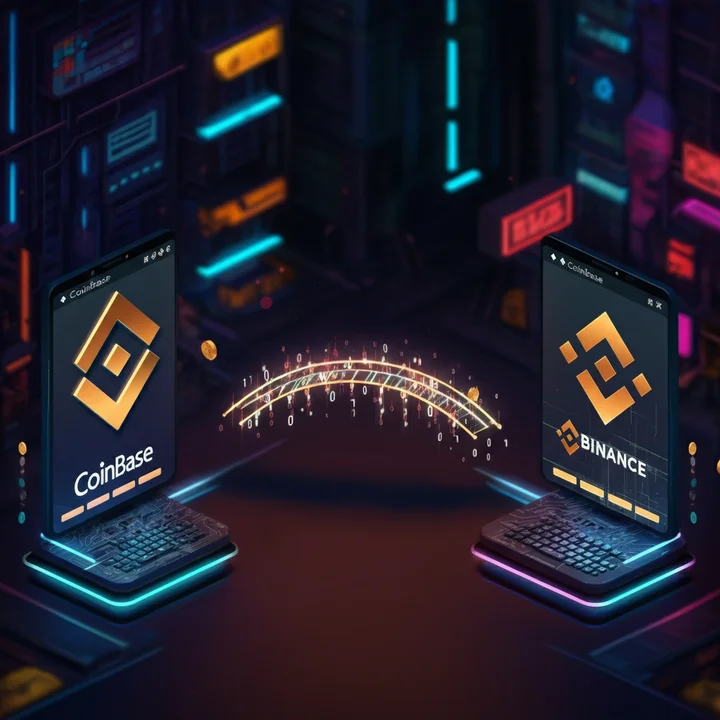If you're considering creating your own cryptocurrency token, you're in the right place. Ethereum and Binance Smart Chain (BSC) are two of the most popular blockchain platforms for token creation due to their robust ecosystems and widespread adoption. But what does it take to create a custom token? How do standards like ERC-20 and BEP-20 factor in? And what tools are needed?
This guide will walk you through the process, step by step, from understanding token standards to deploying your token contract. Whether you're planning to launch a new cryptocurrency or simply learning the ropes of smart contract development, this comprehensive guide has got you covered.
Understanding Token Standards: ERC-20 and BEP-20
At the core of creating a token lies the standards that govern its functionality and interoperability. Here’s an overview:
What is ERC-20?
ERC-20 is the Ethereum blockchain's standard for fungible tokens. These tokens are interchangeable, meaning one unit holds the same value as another. ERC-20 tokens come with predefined functions, such as transferring tokens and checking balances, enabling seamless integration with wallets, exchanges, and decentralized applications (dApps).
What is BEP-20?
BEP-20 serves as the Binance Smart Chain counterpart to ERC-20, offering similar functionality and compatibility but with cheaper transaction costs and faster processing due to BSC’s proof-of-stake mechanism. BEP-20 also supports integration with Binance's ecosystem, making it ideal for certain use cases.
Both standards simplify token creation significantly by providing developers with a template of functions to implement. Additionally, wallets like MetaMask can use these standards to recognize and interact with your token automatically.
Tools You'll Need
Before jumping into token creation, you’ll need several tools to get started. Here’s your tech stack:
MetaMask:
A popular Ethereum wallet browser extension to manage tokens and interact with the blockchain.
Remix IDE:
An online code editor specifically designed for developing and deploying smart contracts in Solidity, Ethereum’s programming language.
Solidity:
The programming language used to write smart contracts on Ethereum and Binance Smart Chain.
Block Explorers (e.g., Etherscan, BscScan):
These platforms verify and monitor your token contract once deployed.
Testnet Access:
Use Ethereum's Rinkeby or Binance's Testnet for a cost-free environment to test your token before going live.
Step-by-Step Guide to Creating Your Custom Token
Follow these steps to create and deploy your custom ERC-20 or BEP-20 token.
Step 1: Modify the Solidity Code
A typical token smart contract uses a standard Solidity code template. Here's an example code snippet for an ERC-20 token:
pragma solidity ^0.8.0;
import "@openzeppelin/contracts/token/ERC20/ERC20.sol";
contract MyToken is ERC20 {
constructor(uint256 initialSupply) ERC20("MyToken", "MTK") {
mint(msg.sender, initialSupply (10 decimals()));
}
}Here's how to customize it:
Token Name: Replace
"MyToken"with your desired token name.Symbol: Replace
"MTK"with your token symbol (e.g., "USD", "BTC").Decimals: Most tokens use 18 decimals. This controls the precision of your token supply.
Initial Supply: Set the number of tokens created upon deployment.
For BEP-20 tokens, the code is nearly identical. Since BSC supports Solidity, you simply deploy the same contract on the Binance Smart Chain.
Step 2: Compile the Contract in Remix IDE
Open Remix IDE in your browser.
Create a new
.solfile (e.g.,MyToken.sol).Paste your modified Solidity code into the editor.
Use the Solidity compiler in Remix to compile your contract. Make sure the correct compiler version (e.g., ^0.8.0) is selected.
Step 3: Deploy the Contract
Connect your MetaMask wallet to the desired network (Ethereum or Binance Smart Chain).
Use Remix’s deployment panel to deploy your contract.
Review and confirm the deployment transaction in MetaMask.
Once the transaction is confirmed, your token contract is live. The contract address will be shown in Remix.
Step 4: Verify the Contract
To build trust with users, it’s essential to verify your smart contract:
Copy your contract address, paste it into the appropriate blockchain explorer, and follow the instructions for contract verification.
Step 5: Add the Token to Your Wallet
To view your token in MetaMask:
Switch to the network your token is deployed on.
Click “Import Tokens” in MetaMask.
Paste your contract address, and MetaMask will fetch your token name and symbol automatically.
Optional Features for Your Token
Minting: Add a minting function to create additional tokens later if needed.
Burning: Implement a burn mechanism to destroy tokens, reducing supply and increasing scarcity.
For example, here’s a burn function in Solidity:
function burn(uint256 amount) external {
burn(msg.sender, amount);
}Cost and Gas Fees
Deploying smart contracts on the Ethereum Mainnet incurs high gas fees due to network congestion. Fees range from $30 to over $100 depending on complexity. Binance Smart Chain offers a more affordable alternative, with gas fees typically under $1.
Testing your token on testnets (Ethereum's Rinkeby or Binance Smart Chain Testnet) allows you to experiment with zero cost before going live.
Best Practices and Legal Considerations
Security First:
Audit your smart contract before deployment to avoid exploits. Use robust libraries like OpenZeppelin for added security.
Compliance:
Adhere to relevant regulations in your jurisdiction, especially if you plan to sell or distribute your token.
Transparency:
Publish proper documentation, such as your token’s whitepaper and intended use.
Scalability:
If you foresee high transaction volumes, consider L2 solutions or sidechains to reduce fees and improve efficiency.
Where to Go From Here?
Creating a custom token is an exciting gateway into blockchain technology. Whether you aim to launch a fundraising ICO, gamify your platform, or create a business utility token, following the steps outlined ensures a smooth deployment on Ethereum or Binance Smart Chain.
For further learning, check out Solidity programming documentation or tutorials on leveraging advanced token features. If you’d like to experiment with AI-assisted coding (or simply need help refining existing smart contracts), tools like OpenAI Codex and ChatGPT with technical plugins can be incredibly helpful.



